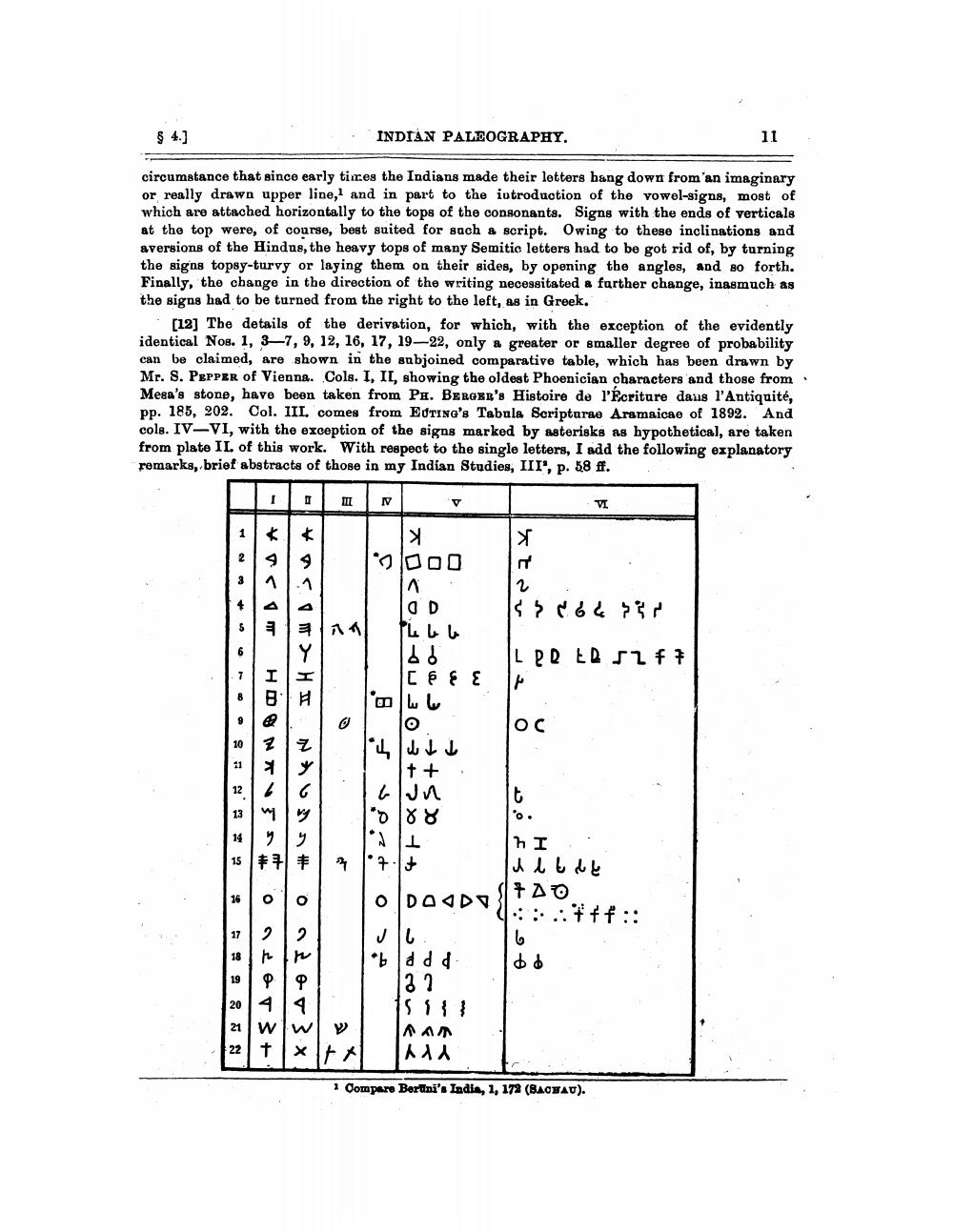________________
$ 4.)
INDIÁN PALEOGRAPHY.
11
circumstance that since early times the Indians made their letters hang down from'an imaginary or really drawn upper line, and in part to the introduction of the vowel-signs, most of which are attached horizontally to the tops of the consonants. Signs with the ends of verticals at the top were, of course, best suited for sach & script. Owing to these inclinations and aversions of the Hindus, the heavy tops of many Semitic letters had to be got rid of, by turning the signs topsy-turvy or laying them on their sides, by opening the angles, and so forth. Finally, the change in the direction of the writing necessitated a further change, inasmuch as the signs had to be turned from the right to the left, as in Greek,
[12] The details of the derivation, for which, with the exception of the evidently identical Nos. 1, 3—7, 9, 12, 16, 17, 19-22, only a greater or smaller degree of probability can be claimed, are shown in the subjoined comparative table, which has been drawn by Mr. S. PEPPER of Vienna. Cols. I, II, showing the oldest Phoenician characters and those from Mesa's stone, have been taken from PA. BERGER's Histoire de l'écriture daus l'Antiquité, pp. 185, 202. Col. III. comes from EDTING's Tabula Scripturae Aramaicae of 1892. And cols. IV-VI, with the exception of the signs marked by asterisks as hypothetical, are taken from plate IL of this work. With respect to the single letters, I add the following explanatory remarks, brief abstracts of those in my Indian Studies, IIT', p. 58 ff.
Om N
3000 OD Isrcourir
IL PRED SZF7 CEE
بیا با مأم
www
ur
op zo'n jg
att ma
3+290
hI Il ble HAO 4::.:#ff::
*bddd
22
AAN MA
1 Compare Bertini's India, 1, 172 (BACHAU).




